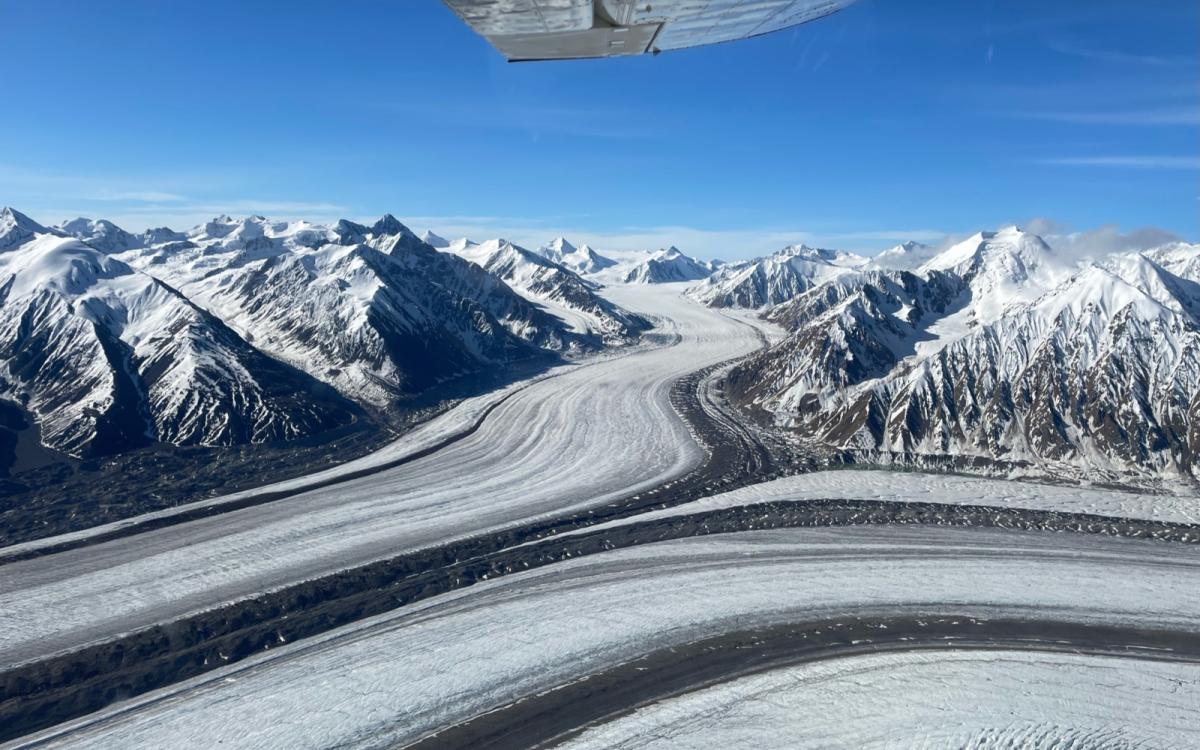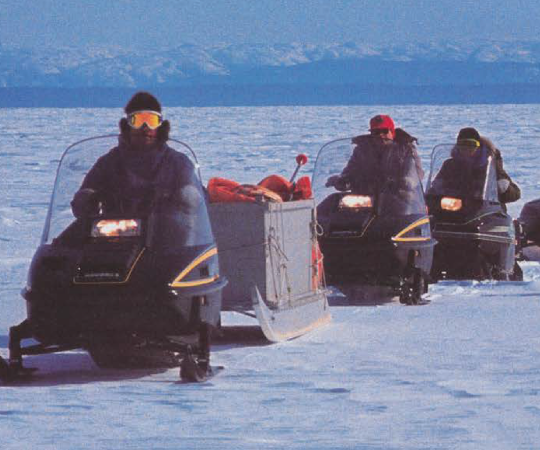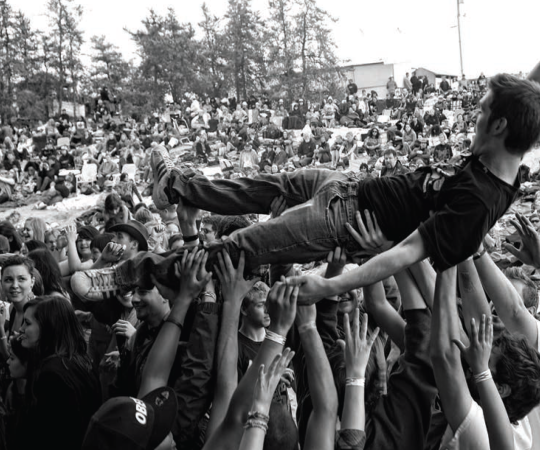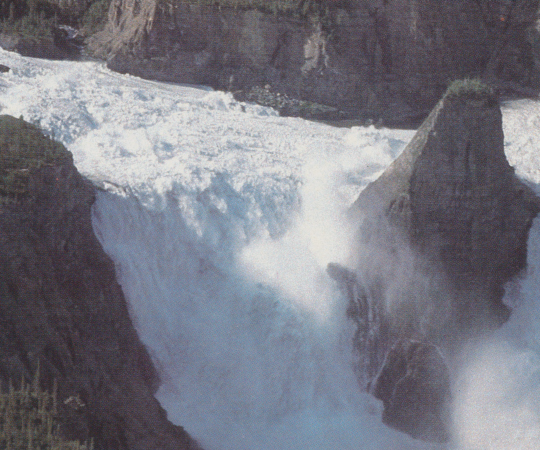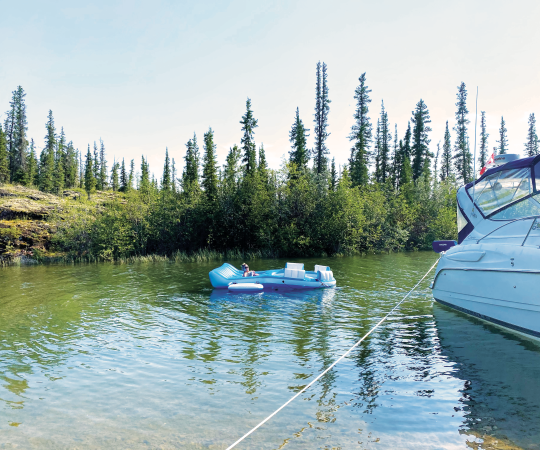I woke up in an snowy pit. My team and I had dug this small shelter out of the snow a few days ago when we first arrived on the icefield. Opening the zipper of my tent, I’m greeted by the massive northern face of Mount Logan looming over us — the highest mountain in Canada.
In truth, I’m surrounded by giants. Here in the St. Elias mountain range, Mount Augusta, Mount Steele, Mount Lucania and Queen Mary Mountain dominate the horizon.
But being in an environment so stark and grand gives a new perspective on everything. Some days, Mount Logan is overwhelming, standing high above a vast and snowy landscape. While on other days, it’s hardly visible amid a whiteout storm. Even the biggest obstacles can disappear in the right circumstances. Even the most extreme conditions can become cozy.
We enjoy an awesome mountain breakfast and head out on skis to start the day. Here at this Yukon glacier camp, we fill our days with an array of activities like exploring surrounding peaks, learning about glacial environments and, of course, some yoga.
There are a few different options for the ski excursions but today we head up to the weather station. When we reach the top, the sun is shining, everyone seems happy and healthy. As I look up at bright blue skies and feel the sun’s heat on me, I think about how this is an amazing, beautiful moment.
We are actually here.
I moved to the Yukon five years ago to better facilitate my guiding and outfitting company, and the more I learned about the territory, the more I wanted to see. My first glimpse of the St. Elias Mountains blew me away because of the sheer size — incomparable even to the Rockies, near where I grew up. Through my research on places to adventure, I came upon an icefield camp nestled between the Kaskawulsh, Logan and Hubbard glaciers. I didn't know how I was going to get there, but I knew one day I would.
Finally, in 2022, I was able to execute a trip up, bringing along eight other people for three nights on the glacier. We arrived at the Silver City Airstrip near Haines Junction full of anticipation and excitement, not really knowing what to expect other than soon we would be whisked away in a Helio plane and taken to the world's largest non-polar ice fields.
But as anyone that’s done any travelling in small planes surely knows, ‘soon' can mean in the next 10 minutes or the next day. For us, it was the next day. Weather issues grounded us overnight. In these situations, it’s important not to panic. Remember, if the pilot doesn't want to fly, you don't want to fly. Luckily, there were cabins at the airstrip to spend the night. We whiled away the day basking in sunlight on a beautiful hike and taking a dip in the cool, clear waters of Kluane Lake.
The next morning, we were finally able to fly out. It took three different flights to get our whole group up on top of the glacier. I was in awe the whole time flying from Silver City until we landed. Flying over the Kaskawulsh Glacier, the magnitude and size of the terrain is unreal.
After about 30 minutes in the air, I finally spotted a tiny dot in the distance — the Weather Haven kitchen tent that was going to be home base for the next couple of days. Once the pilot got the plane down, we unpacked our gear and got to digging out a spot for our sleeping tents. We were the first group of people to stay on the glacier for the season and it was pretty exciting. But it also meant a fair bit of work prepping the site.
The hole had to be about a foot deep and the size of our tent to protect ourselves from wind and weather. The snow we dug out was pushed into a wall that surrounded three sides of the tent. We stayed close to the Weather Haven tent, where we ate, but gave each other enough space to be comfortable.
The next mission was digging out the “pee pit.” The camp is very low-impact, existing as it does in the middle of Kluane National Park, a designated Unesco World Heritage Site. All water is melted on site and all human waste and garbage is flown out for disposal. It makes sense, as we want to keep this wonder as pristine and clean as we found it.
We did have a loose itinerary to follow, but for the most part, the day was dictated by the weather. This can be challenging if you are expecting a certain moment at a certain time. But the land teaches patience. It was noticeable, though, that some were feeling the effects of the altitude. The base camp is 2.5 kilometres above sea level. Nothing major, but it makes you feel more tired and tires you out faster.
Each day, upon returning to camp, there was always such a silent sense of wonder and appreciation of what we were experiencing. A mug of tea would often be enjoyed and then I’d lead a solid yoga session with a little breath work to keep everyone feeling their best, physically and mentally. We fit these sessions in where we could throughout the days.
In the evenings, after dinner, we sat around in traditional camp fashion, either playing cards, maybe having a glass of vino or just relaxing with a book.
Being there the second week of June, the light was all encompassing and everlasting. The Midnight Sun never left us. We were always tired enough to fall asleep by her light, and she was always there in the morning to help wake us up.
I had been apprehensive, not knowing what this trip would be like. But once we all got on top of the rock, with a panoramic view surrounding us, I knew it was worth it. It’s a place I’ll never really leave.

